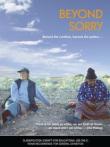AustLit
The material on this page is available to AustLit subscribers. If you are a subscriber or are from a subscribing organisation, please log in to gain full access. To explore options for subscribing to this unique teaching, research, and publishing resource for Australian culture and storytelling, please contact us or find out more.
Latest Issues
AbstractHistoryArchive Description
'Zita Wallace was taken from her Arrernte family at the age of eight. When she returned to her traditional community 43 years later she was rejected and labelled “a white devil”.'
'Aggie Abbott, an Arrernte woman and also a “half-caste”, was hidden from the Aboriginal Protector at the same time Zita was taken. Today she still has her law, her language and her culture but lives in abject poverty.'
'This is the remarkable tale of two women who have forged a new friendship and are taking the debate of the stolen generation “beyond sorry”.' (Source: CAAMA website)
Publication Details of Only Known VersionEarliest 2 Known Versions of
Last amended 6 Apr 2017 17:41:33
Export this record




